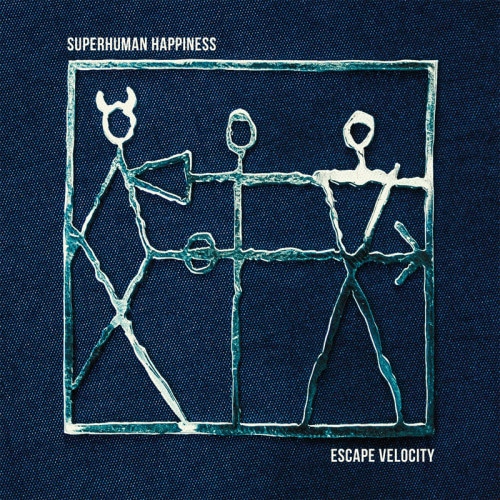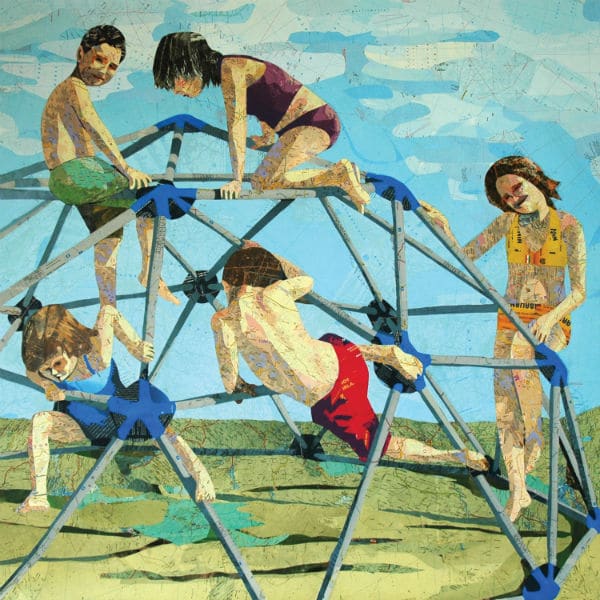- No products in the cart.
- No products in the cart.
Superhuman Happiness

Superhuman Happiness is a musical house designed by Stuart Bogie and built and maintained by a cast of musicians and artists primarily in and around the city of New York. In October of 2014, the band released the single “Catch A Break,” ushering in a new sound that features vocalist Andrea Diaz. The song was composed by Bogie with his longtime collaborator, Eric Biondo. The lyric addresses city life, and living on the hamster wheel of ambition and survival. “Catch a Break” was produced by Royal Potato Family label mate Sam Cohen and mixed by Chris Tabron. The single is the first in a series of releases revealing Superhuman Happiness’ discoveries in sound and poetry.
The group released their first full-length album in 2013, entitled Hands. The record applied an approach coined Intentional Collaboration by which the musicians, over the course of several rehearsals, practice musical and theatrical improv games simultaneously drilling certain musical skills, while opening up their creative impulses and developing the group mind. Many of these games are simple clapping patterns, which over time became the foundation for the majority of pieces on Hands.
The music on Hands was developed and performed by Stuart Bogie, Luke O’Malley, Eric Biondo, Ryan Ferreira, Jared Samuel, Nikhil Yerawadekar and Miles Arntzen, with additional performances by Colin Stetson, Afi McClendon, Abena Koomson, Kalmia Traver, Shaneeka Harrel and Joci Adams. It was engineered by Phil Pallazolo at Seaside Studio in Brooklyn, mixed by P. Pallazolo, Hernan Santiago, Josh Grant, Dan Huron, and mastered by Hernan Santiago.
Prior to that, in Autumn 2012, Superhuman Happiness recorded the score (alongside Kronos Quartet) for the Oscar and Emmy nominated documentary Film How to Survive a Plague. It was composed and produced by Stuart Bogie and Luke O’Malley and recorded by Superhuman Happiness and Kronos Quartet. Red Hot provided Music Supervision. The film itself was directed by David France, and produced by Howard Gertler.
Superhuman Happiness, acting as the house band, shared the stage with Kronos Quartet, Tony Allen, Sahr Ngaujah (Tony nominated lead from the musical Fela!), M1 of Dead Prez, Rubblebucket, Congolese rapper Biloji, Grammy award winner Angelique Kidjo, Sinkane (DFA records), and Abena Kooson, performing the score to How to Survive a Plague live at Lincoln Center Out of Doors (2013) as part of a series celebrating Kronos’ 40 year career. The concert also featured performances of music from the Red Hot & Riot 2 compilation featuring the music of Fela Anikulapo Kuti.
Superhuman Happiness functions as film composers, a creative back-up band, and independent performance unit all at once. These three areas of work encapsulate the mission of the group and their art.
Releases
-
Superhuman HappinessEscape Velocity$11.98 – $16.98
-
Superhuman HappinessHands$11.98 – $16.98
-
Superhuman Happiness - Needles and PinsNeedles and Pins / Oh, Tatiana$6.98
-
Superhuman HappinessSee Me On My Way / Sentimental Pieces$6.98
-
Superhuman HappinessThe Physical EP$8.98
-
The Bogie Band feat. Joe RussoThe Prophets In The City$25.00








